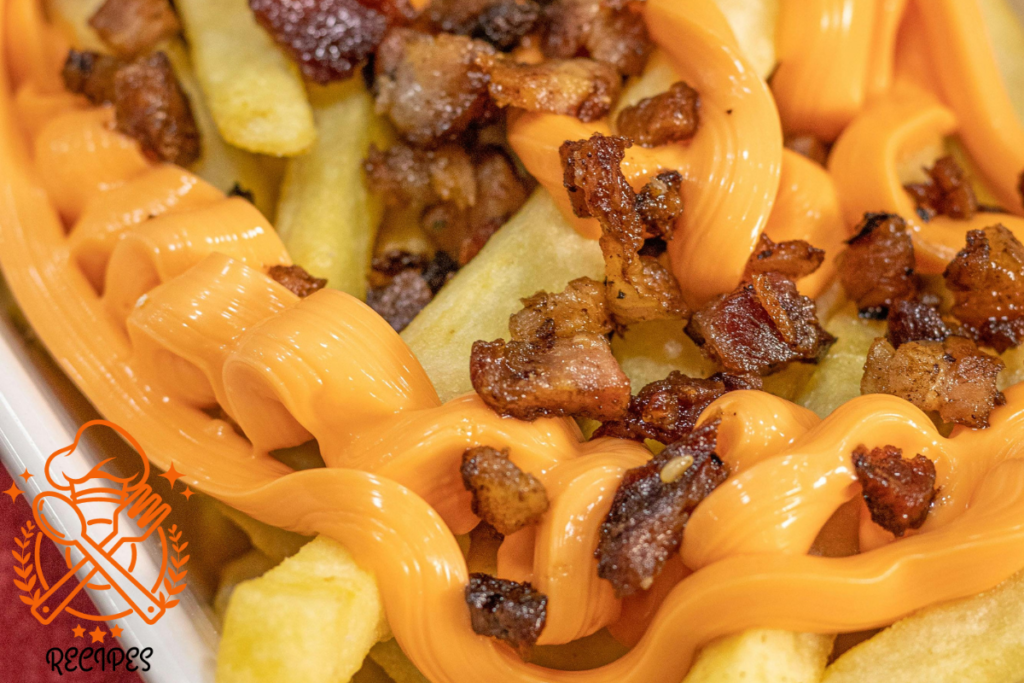Table of Contents
Cheesy potatoes are a rich, hearty dish on their own, but pairing them with the right side dishes can elevate your meal from satisfying to spectacular. You want sides that complement the creaminess of the potatoes without overwhelming the palate.
Protein Pairings
The richness of cheesy potatoes calls for simple, savory proteins to balance things out. A grilled or roasted chicken, with its juicy, tender texture, pairs perfectly with the cheesy goodness of the potatoes. For heartier appetites, meatloaf offers that homey, comforting flavor that meshes well. For a more festive occasion, try baked ham, with its sweet, salty notes cutting through the creaminess of the potatoes.
Vegetable Options
To lighten the meal and add a pop of color, serve your cheesy potatoes alongside roasted or steamed vegetables. Brussels sprouts with a bit of char, steamed broccoli, or even green beans with almonds offer a welcome contrast in both flavor and texture. The slight bitterness of the greens helps cut through the richness of the dish, offering a refreshing balance.
How to Store and Reheat Cheesy Potatoes: Keeping the Leftovers Just as Good
One of the great things about cheesy potatoes is their ability to keep well as leftovers. Whether you’ve made too much or simply want to enjoy the dish over the next few days, storing and reheating cheesy potatoes is straightforward.
Storage Instructions
Cheesy potatoes can be stored in an airtight container in the refrigerator for up to three days. Make sure the container is properly sealed to prevent moisture loss, which can cause the dish to dry out.
Reheating Tips
To reheat, the oven is your best friend. Preheat to 350°F, place the potatoes in an oven-safe dish, and heat for 15-20 minutes. If you’re in a rush, the microwave can work, but it may not provide the same crispy top layer that the oven offers. For the microwave method, reheat individual portions on medium heat for 2-3 minutes, checking to avoid overheating and drying out the dish.
Can You Freeze Cheesy Potatoes? Absolutely, Here’s How!
If you’ve made an extra-large batch of cheesy potatoes, freezing can be a great way to preserve the leftovers for a future meal. However, how you freeze them—and how you reheat them—can make a big difference in quality.
How to Freeze Cheesy Potatoes

You can freeze cheesy potatoes either before baking or after they’ve been fully cooked. If freezing before baking, assemble the dish as usual, then cover it tightly with plastic wrap followed by aluminum foil to prevent freezer burn. Freeze for up to two months.
If you’ve already baked the dish and have leftovers, allow the potatoes to cool completely before transferring them to a freezer-safe container. Follow the same wrap method to ensure the dish stays fresh.
How to Reheat Frozen Cheesy Potatoes
When ready to bake, thaw the potatoes overnight in the refrigerator. This helps ensure the dish cooks evenly without scorching the top layer. Bake the thawed cheesy potatoes at 350°F for about 20-30 minutes, or until fully heated through. If the top starts browning too much, cover loosely with foil for the last 10 minutes of cooking.
Healthier Alternatives to Cheesy Potatoes: Comfort Food Without the Guilt
We all love cheesy potatoes, but let’s be honest—sometimes we want the indulgence without the extra calories. Thankfully, there are some simple tweaks you can make to lighten up this dish while still keeping it rich and flavorful.
Reducing the Fat Content
The first step to making a healthier version is to swap out some of the higher-fat ingredients. Use skim milk or low-fat cream instead of full-fat cream to cut back on the richness without sacrificing too much flavor. You can also opt for low-fat cheese, although be mindful that these don’t melt as smoothly as their full-fat counterparts. Another option is to use Greek yogurt in place of some of the cream—it adds a tangy note while reducing the overall fat content.
Using Cauliflower Instead of Potatoes
For those watching their carbohydrate intake, cauliflower can be an excellent substitute for potatoes. The mild flavor of cauliflower pairs well with cheese, and when baked, it has a similar texture to soft, tender potatoes. Plus, you’ll get the added benefit of extra fiber and vitamins, making it a nutritious swap without losing any of the creamy, cheesy goodness you crave.
Conclusion: Why Cheesy Potatoes Deserve a Place on Your Table
In the world of comfort foods, cheesy potatoes reign supreme. With their irresistible blend of tender potatoes, melted cheese, and crispy topping, they’re the ultimate side dish for any occasion—whether it’s a cozy family dinner or a festive holiday feast. Avoid common pitfalls like undercooked potatoes, poor cheese choices, and over-baking, and follow our tips to elevate your cheesy potatoes to a whole new level of deliciousness.
FAQs About Cheesy Potatoes
1. Can I Make Cheesy Potatoes Ahead of Time?
Yes, cheesy potatoes can be assembled ahead of time and stored in the refrigerator for up to 24 hours before baking. This makes them a convenient option for busy meal preps or holiday dinners.
2. What Can I Use If I’m Out of Potatoes?
If you don’t have potatoes on hand, you can use sweet potatoes or cauliflower for a twist. Both provide a different flavor profile but still work wonderfully in cheesy dishes.
3. How Long Can Cheesy Potatoes Stay Fresh?
Cheesy potatoes will stay fresh for up to 3 days when stored properly in an airtight container in the refrigerator.
4. Can I Use Pre-Shredded Cheese?
While pre-shredded cheese is convenient, it often contains anti-caking agents that prevent it from melting smoothly. For best results, shred your cheese fresh.
5. What’s the Best Way to Reheat Cheesy Potatoes?
To maintain the texture and flavor, reheating cheesy potatoes in the oven at 350°F for 15-20 minutes is ideal. The microwave is a faster option, but may not give you that crispy top.

